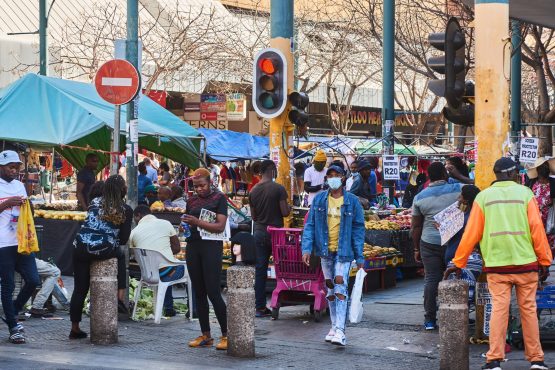GDP shrinks by 0.7% in Q2

South Africa’s economy is smaller than it was before the coronavirus pandemic struck, after the worst flooding in almost three decades and severe power outages caused it to shrink in the second quarter.
Gross domestic product contracted 0.7% in the three months to June, compared with downwardly revised growth of 1.7% in the previous quarter, Statistics South Africa said on Tuesday.
That’s the first decline since the third quarter of last year, when deadly riots and a cyberattack at the state-owned port and freight rail operator weighed on the economy.
The deterioration in economic performance this quarter was led by lower economic activity in the manufacturing, agricultural and mining and quarrying industries. The manufacturing industry declined by 5.9%, with eight of the ten manufacturing divisions reporting negative growth rates.
The mining and quarrying industry saw a 3.5% slump, on decreased production in gold, coal, manganese ore and diamonds.
The median of 13 economists’ estimates in a Bloomberg survey was for a slump of 0.8%. The economy grew 0.2% from a year earlier, compared with a forecast of 0.6% growth in a separate survey.
At an annualised R4.57 trillion in the three months through June, GDP is now about R21 billion lower than the fourth quarter of 2019, before the pandemic struck.
The quarterly decline comes after heavy rains in the eastern KwaZulu-Natal province, the second-biggest contributor to South Africa’s GDP, triggered floods and landslides that washed away roads, bridges and houses, halted operations at vehicle-manufacturing plants and wrecked infrastructure at sub-Saharan Africa’s biggest container port.
Load shedding – which was imposed on more than half of the days in the second quarter, according to Bloomberg calculations – also contributed to the drop.
South Africa’s economy remains stuck in its longest downward phase since World War II and hasn’t grown by more than 3% annually since 2012.
Slow policy reforms, weak business sentiment and high levels of crime continue to weigh on fixed investment spending, with private companies wary of committing large sums of money to domestic projects. Gross fixed capital formation rose 0.5% from the previous quarter.
Consumer sentiment
Household spending, which accounts for about two-thirds of GDP, grew 0.6% in the second quarter. Household consumption expenditure is likely to come under further pressure as consumers reel from high fuel and food prices and an aggressive interest-rate hiking cycle.
Stats SA noted that spend on alcohol, tobacco, clothing, housing, furnishings and recreation contributed negatively to growth.
Instability and inequality
Sluggish economic growth and mounting price pressures pose a threat to social stability in one of the world’s most unequal societies and could complicate efforts to reduce fiscal deficits and debt, and the government is considering widening the welfare net in a country where almost half of the population gets at least one social grant. Extreme inequality, poverty and high unemployment are seen as a legacy of the apartheid system that disadvantaged the Black majority.
Economic growth in the third and fourth quarters of the year won’t reach 1%, according to central bank forecasts. Rising interest-rates, an erosion in consumer spending power, supply-chain disruptions stemming from China’s Covid Zero measures and war-induced tensions in the European Union are among the risks to the domestic growth outlook for the second half of 2022.

